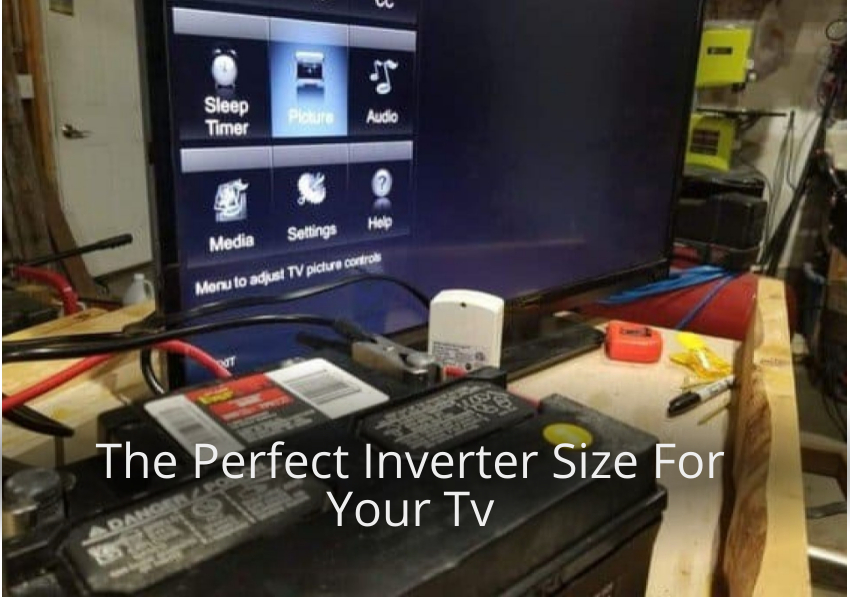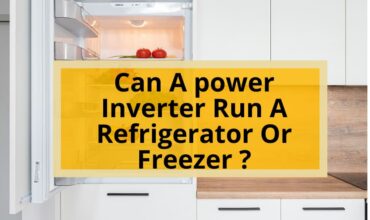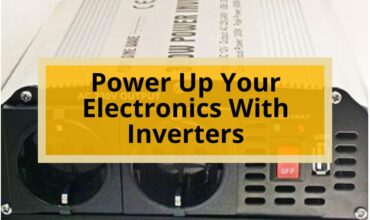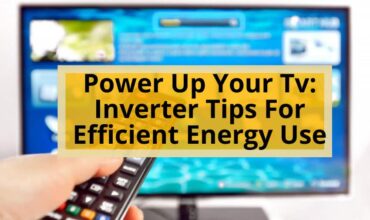In a world where our reliance on technology grows ever stronger, finding sustainable ways to power our devices has become a pressing concern. The juxtaposition of our desire for entertainment and the need for eco-friendly solutions has led to the rise of solar-powered TV setups.
Imagine basking in the glow of your favorite shows, all while reducing your carbon footprint and embracing the power of the sun. To achieve this, selecting the perfect inverter size is paramount. This article delves into the intricacies of determining the right inverter size for your TV, allowing you to harness the full potential of solar energy.
By understanding the wattage of your television, considering inverter capacity, and taking into account battery life, you can optimize your solar-powered TV experience. Additionally, we explore the different types of inverters available, ensuring that you make an informed decision when it comes to powering your entertainment with solar energy.
Join us on this journey towards sustainable and guilt-free leisure, and discover the perfect inverter size for your TV.
Choosing the Right Inverter Size
Determining the appropriate inverter size for a TV can be achieved by adding 20-25% to the TV’s wattage, as per the established formula. This ensures that the inverter has enough capacity to handle the power demands of the TV.
It is important to consider the wattage of the TV when choosing the inverter size, as different TVs have different power requirements. For example, a 45 inch LED TV consumes around 80 watts, so a 150W inverter would be suitable. Similarly, a 65 inch TV with 100 watts would require a 125W inverter.
It is recommended to round up the inverter capacity to the next largest size available. By selecting the appropriate inverter size, you can ensure that your TV runs smoothly and efficiently on solar power.
also read : The Power Of Choosing The Right Generator: Size And Safety Matters

Determining TV Wattage
Assessing the wattage requirements of the television is a crucial step in accurately selecting the appropriate inverter capacity. The wattage of a TV determines the amount of power it consumes and thus the size of the inverter needed to run it on solar energy.
It is important to consider the wattage of the TV in order to ensure that the inverter can handle the load. The formula for determining inverter size is to add 20-25% to the TV’s wattage, which takes into account the power needed to start the TV and any additional power requirements.
By accurately determining the TV’s wattage, users can select an inverter of sufficient capacity to power their entertainment system and ensure a reliable and efficient solar setup.
Inverter Capacity and Wattage
The capacity of the inverter is determined by the wattage requirements of the electronic device being powered. When selecting an inverter for a TV, it is important to consider the wattage of the TV and any additional components that may be connected to it.
The formula to determine the appropriate inverter size is to add 20-25% to the total wattage. This ensures that the inverter can handle the power demands of the TV without being overloaded. It is recommended to round up to the next largest available inverter size to provide a safety margin.
Additionally, it is important to consider the type of inverter, with pure sine wave inverters being more energy efficient and suitable for newer TVs.
By selecting the correct inverter capacity, you can ensure that your TV operates smoothly and efficiently using solar energy.
Considerations for Battery Life
To optimize the longevity of a battery in an off-grid solar system, it is essential to carefully manage the power consumption of connected devices. This is especially important when considering the usage of a television with an inverter. Here are some considerations for battery life:
- Power-efficient TV models: Choosing energy-efficient TVs can significantly reduce power consumption and extend battery life.
- Limiting TV usage: Implementing strategies such as setting time limits or scheduling TV usage can help conserve battery power.
- Power-saving features: Utilizing built-in power-saving features on the TV, such as sleep mode or automatic power-off, can further reduce power consumption.
- Battery capacity: Ensuring that the battery bank has sufficient capacity to support the TV’s power requirements is crucial for maintaining a longer runtime.
By implementing these strategies, individuals can optimize battery life in off-grid solar systems, allowing for extended periods of TV usage while enjoying the benefits of solar energy.
Types of Inverters
There are various types of inverters available for converting DC power from solar panels into AC power for running electronic devices.
One type is the pure sine wave inverter, which is recommended for newer TVs as it provides a clean and stable power supply. These inverters produce a wave that closely resembles the wave of power supplied by the grid, making them more energy efficient and suitable for sensitive electronics.
On the other hand, modified sine wave inverters can be used for simpler electronics and are generally less expensive. They produce a wave that is a modified version of the grid power wave, which may not be as clean or stable.
When choosing an inverter for your TV, it is important to consider the type of TV you have and its energy requirements to ensure efficient and reliable operation.
Frequently Asked Questions
Can I use a grid-tied system to power my TV with solar energy?
Yes, a grid-tied system can be used to power a TV with solar energy. For example, in a case study, a grid-tied system was successfully used to power a 65-inch TV, providing energy efficiency and eliminating the need for a battery bank.
What is the difference between a pure sine wave inverter and a modified sine wave inverter?
A pure sine wave inverter produces a smooth and consistent flow of electricity, similar to the power from the grid. A modified sine wave inverter produces a less refined output, which can affect the performance of certain electronic devices, such as newer TVs.
What are surge watts and why do they need to be considered when choosing an inverter size?
Surge watts refer to the temporary power surge that occurs when an appliance starts up. They need to be considered when choosing an inverter size because the inverter needs to be able to handle the initial surge of power without being overloaded.
Can I use a 350W inverter to power a TV larger than 75 inches?
No, a 350W inverter may not be sufficient to power a TV larger than 75 inches. It is recommended to use a 500W inverter or higher to ensure proper power supply for larger TVs and additional components.
Are there any specific power requirements for TVs in terms of surge watts?
There are no specific power requirements for TVs in terms of surge watts. Surge watts may need to be considered for running the entire house or most appliances on the inverter, but TVs themselves do not have surge watt requirements.






